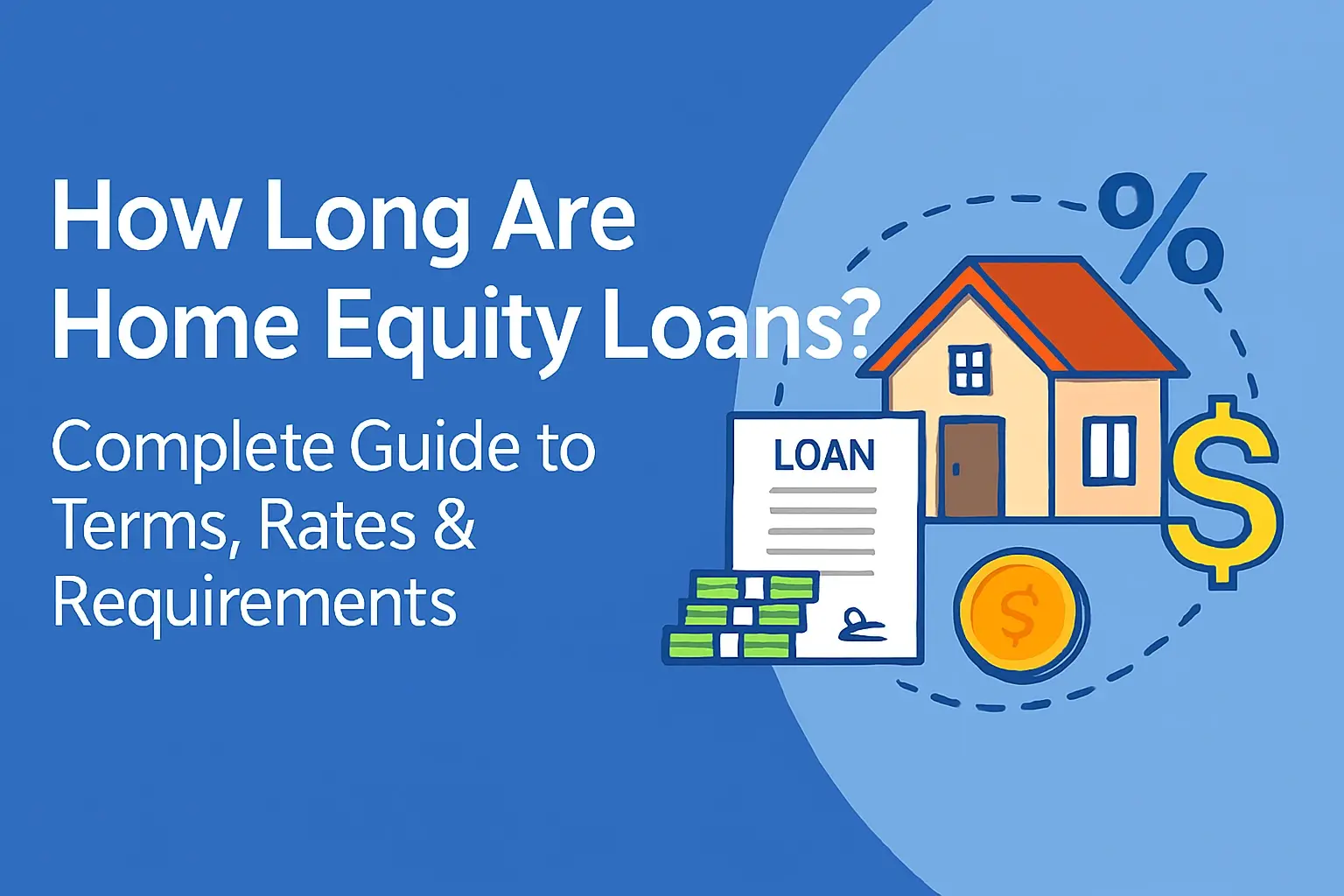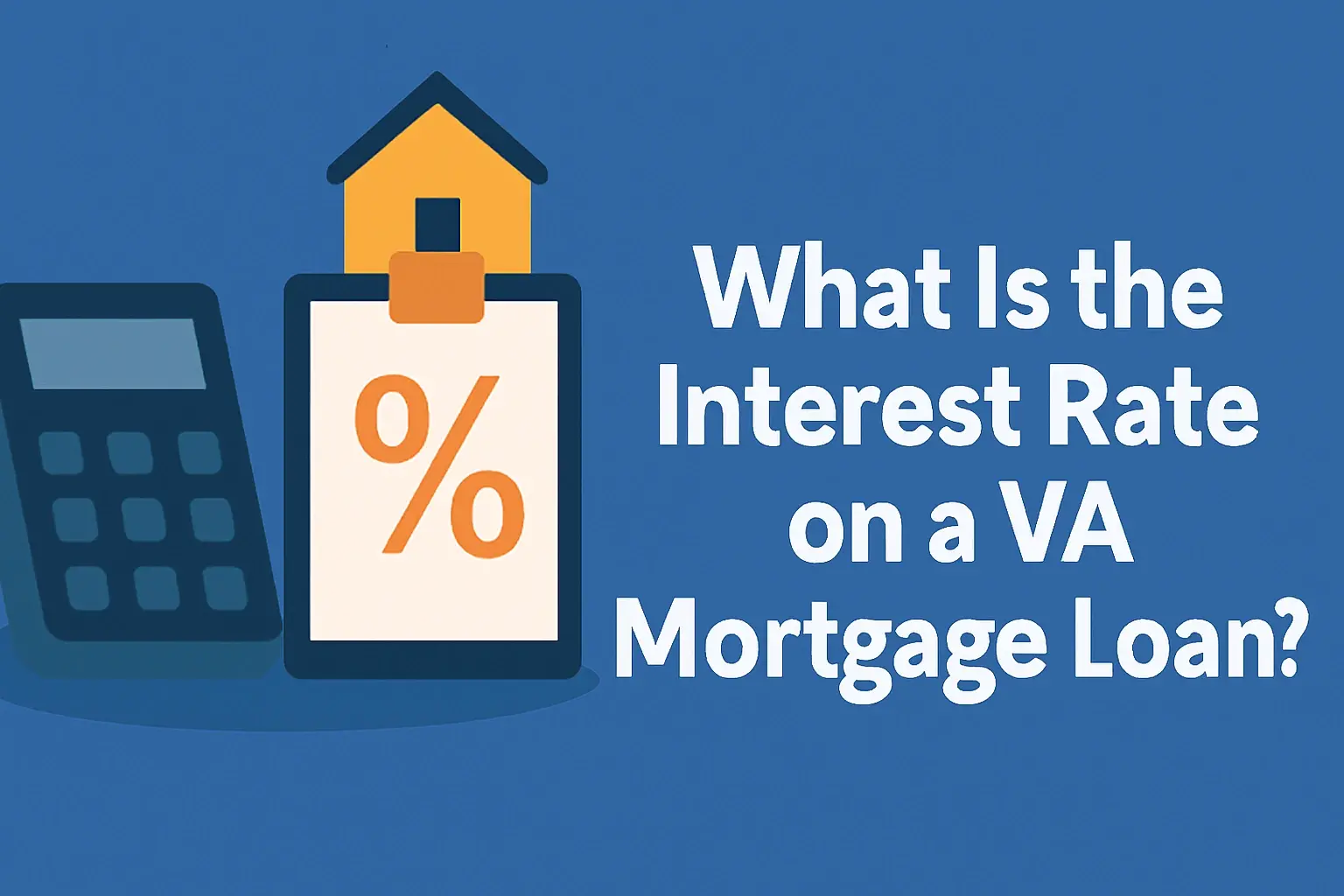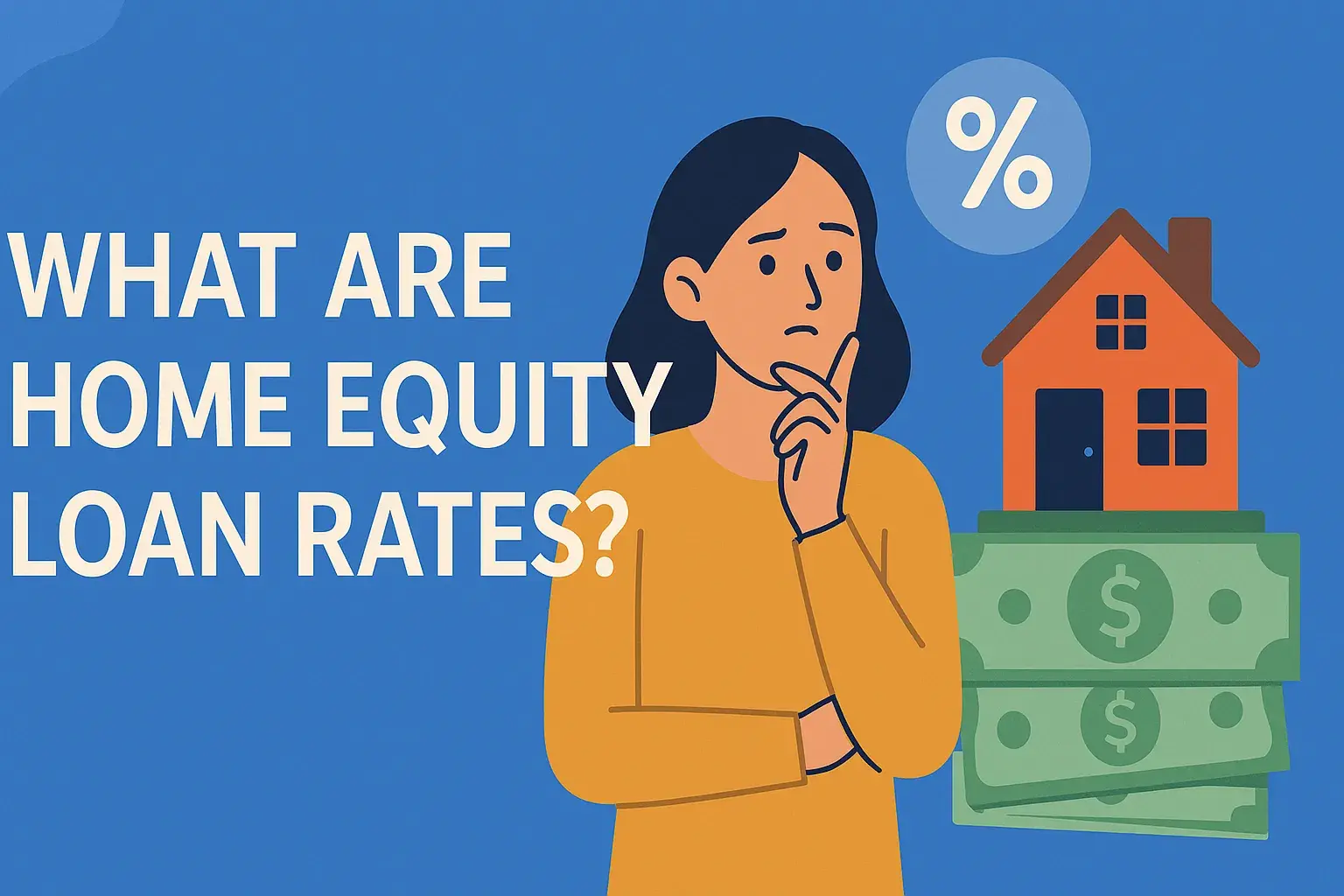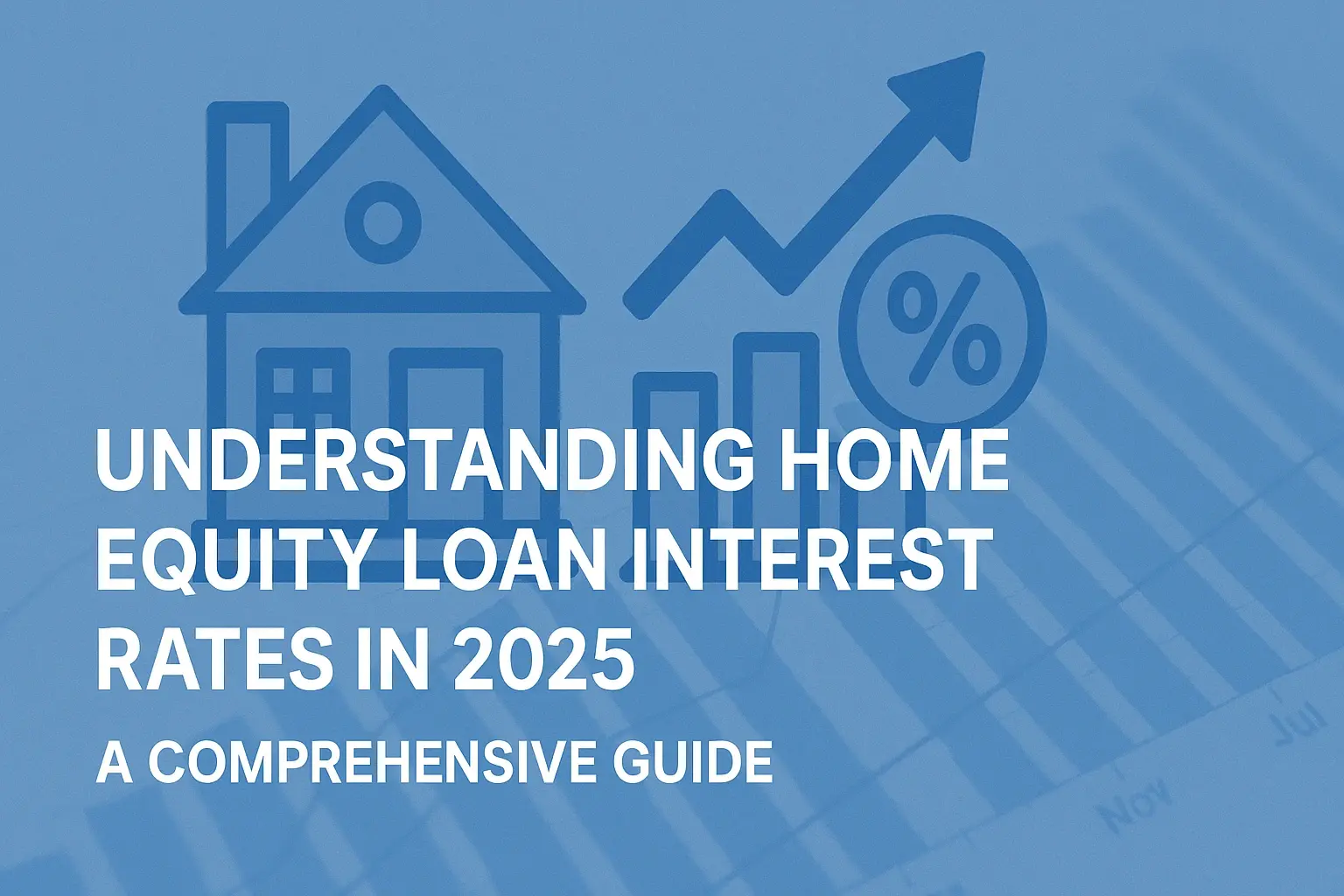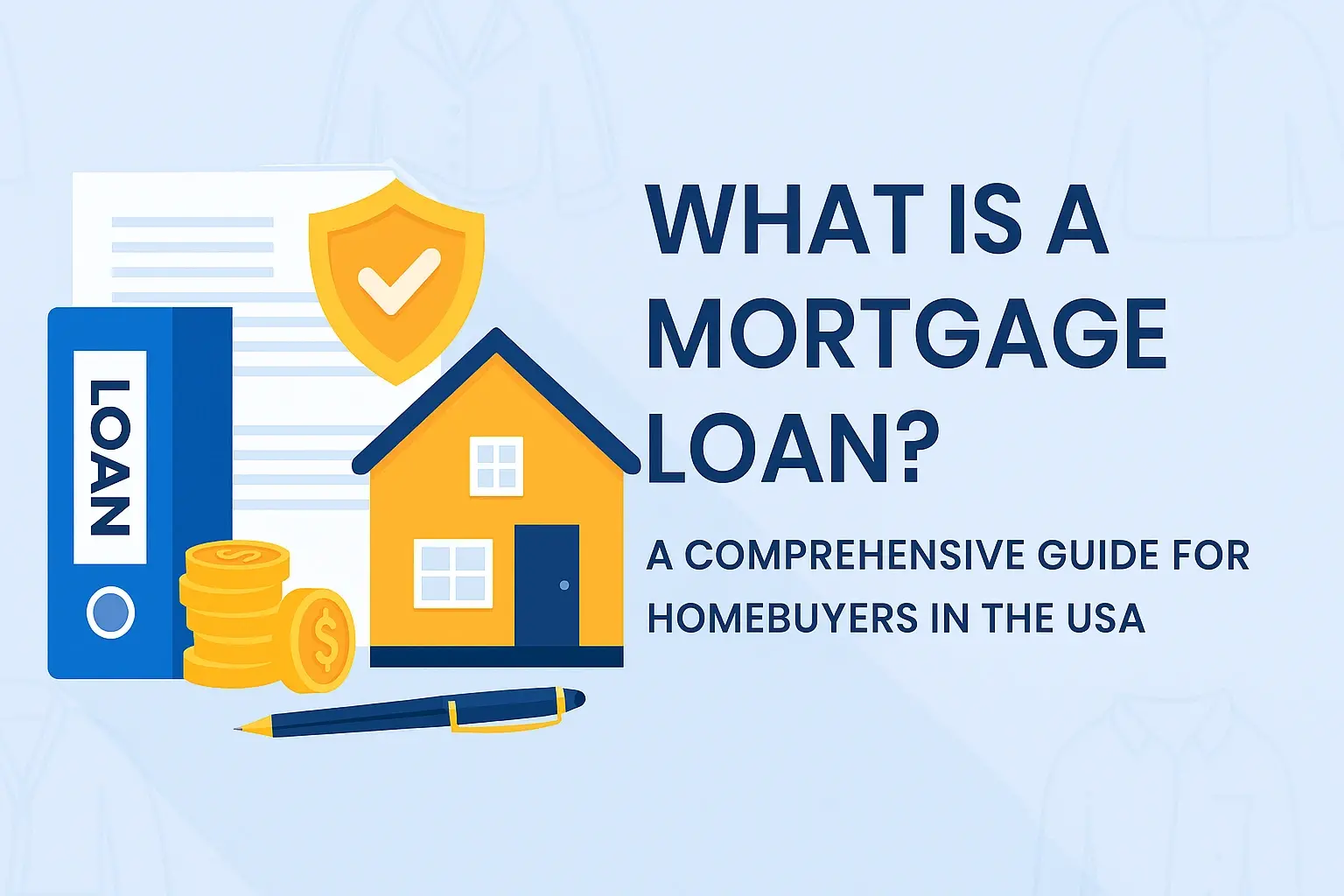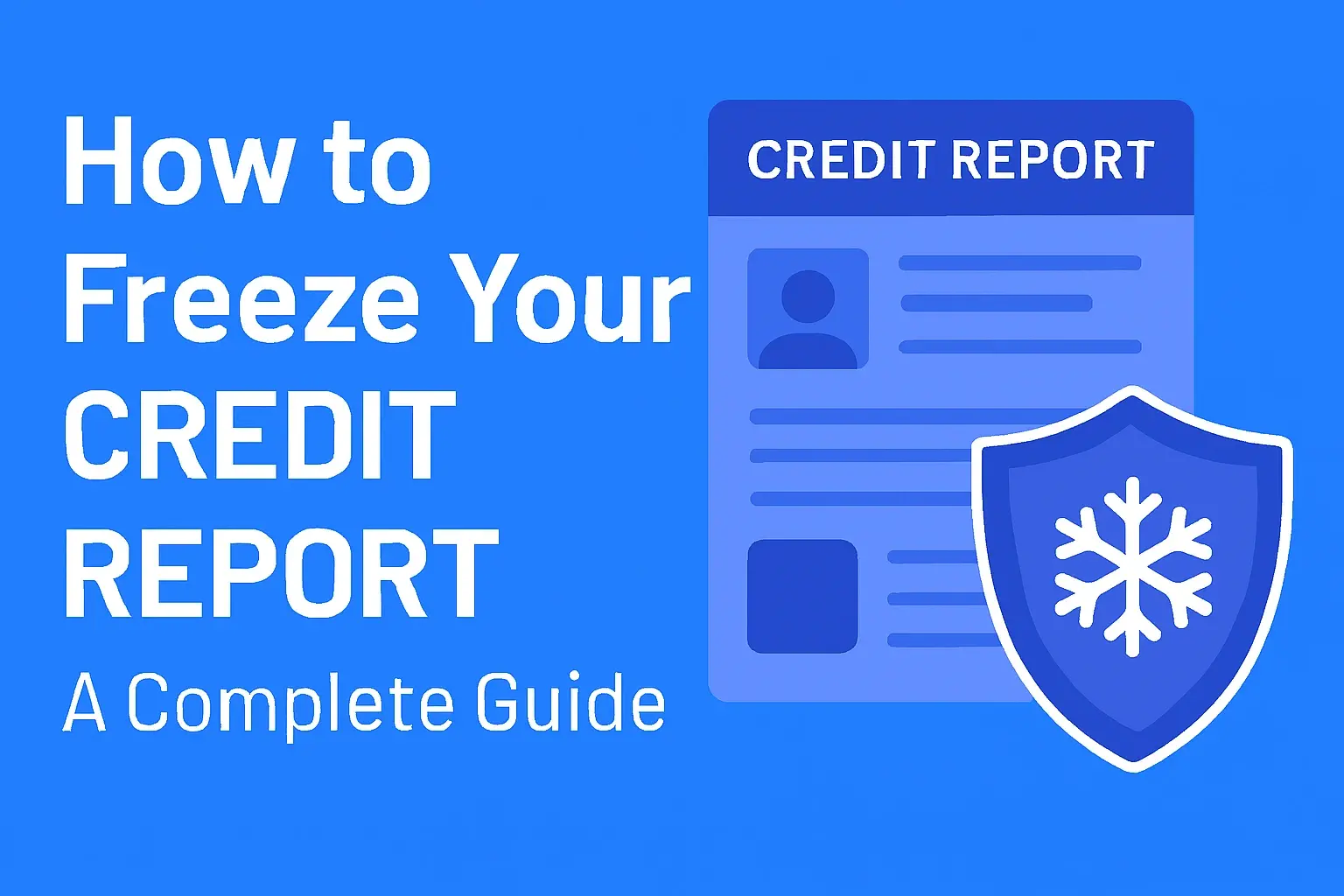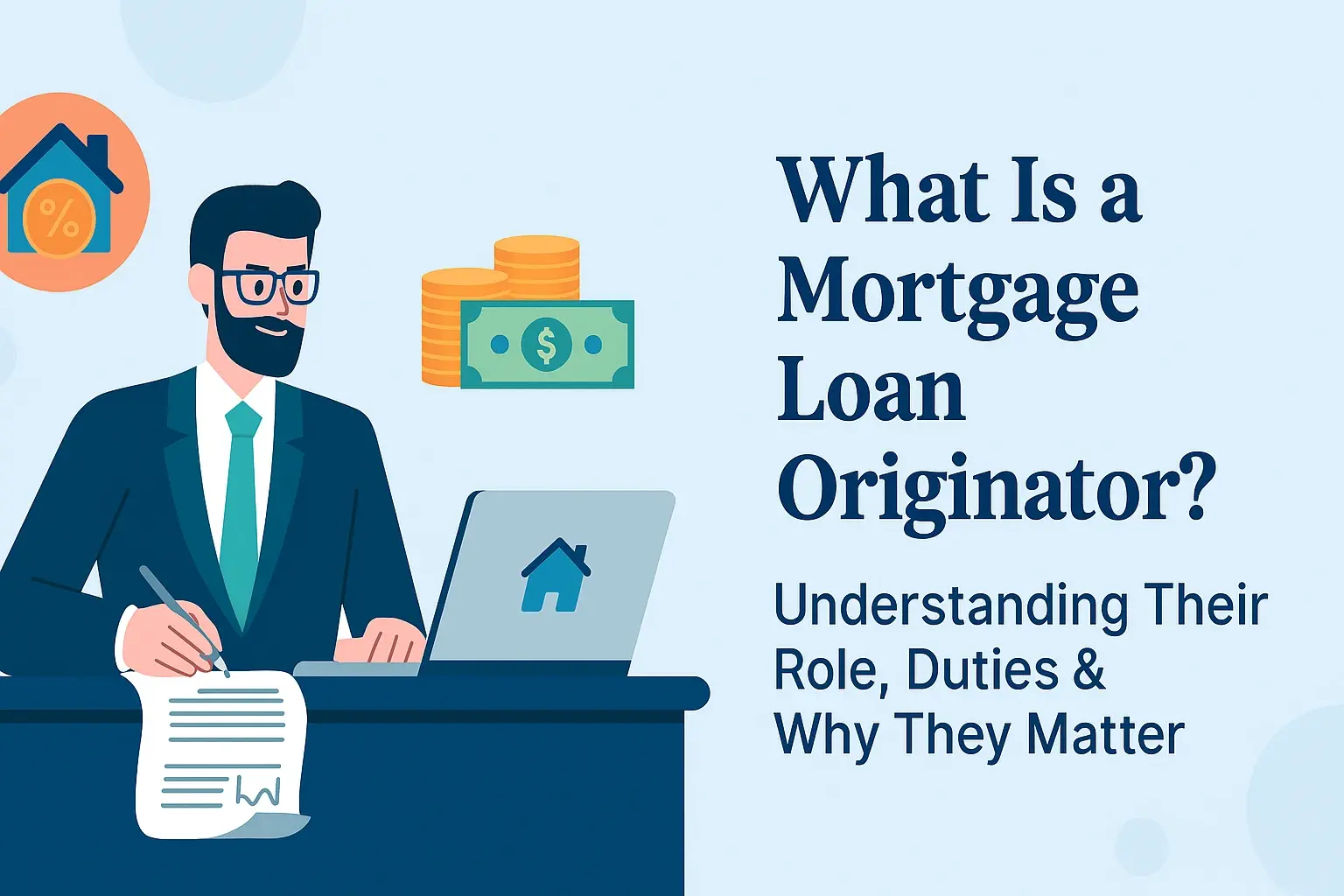-
Posted on: 22 Mar 2025

-
Dreaming of homeownership even with a less-than-perfect credit history? This guide reveals how specific home loans for bad credit can be your pathway to not only owning a home but also significantly boosting your credit score in 2025. Discover actionable strategies and understand the process.
Understanding Credit Scores and Their Impact
Your credit score is a three-digit number that lenders use to assess your creditworthiness. It's a snapshot of your financial behavior, influencing your ability to borrow money, the interest rates you'll be offered, and even your eligibility for rental properties or certain jobs. In 2025, understanding this score is more critical than ever, as it directly impacts major life decisions like purchasing a home.
What is a Credit Score?
Credit scores are typically calculated by credit bureaus like Equifax, Experian, and TransUnion. They use complex algorithms to analyze your credit report, which details your borrowing and repayment history. Common scoring models include FICO and VantageScore, with scores generally ranging from 300 to 850. A higher score indicates a lower risk to lenders, while a lower score suggests a higher risk.
Key Factors Influencing Your Credit Score
Several elements contribute to your credit score. Understanding these is the first step towards improving it:
- Payment History (35%): This is the most significant factor. Consistently paying bills on time is paramount. Late payments, defaults, and bankruptcies can severely damage your score.
- Amounts Owed (30%): This refers to your credit utilization ratio – the amount of credit you're using compared to your total available credit. Keeping this ratio low (ideally below 30%) is crucial.
- Length of Credit History (15%): The longer you've managed credit responsibly, the better.
- Credit Mix (10%): Having a mix of different credit types (e.g., credit cards, installment loans) can be beneficial, but it's less impactful than payment history or amounts owed.
- New Credit (10%): Opening multiple new credit accounts in a short period can temporarily lower your score, as it might signal financial distress.
The Impact of a Low Credit Score
A low credit score, often considered below 620 on the FICO scale, can present significant hurdles. For prospective homeowners, it often means:
- Higher interest rates on mortgages, leading to substantially more paid over the life of the loan.
- Difficulty qualifying for a mortgage at all, with many traditional lenders rejecting applications.
- Requirement for a larger down payment.
- Potential need for a co-signer.
However, the landscape is evolving. In 2025, there are more avenues than ever to explore homeownership despite past credit challenges, particularly through specialized home loans for bad credit. These loans, while carrying their own terms, can serve as a powerful tool for financial rehabilitation and asset building.
Bad Credit Home Loans Explained
Home loans for bad credit, often referred to as subprime mortgages or bad credit mortgages, are specifically designed for individuals whose credit scores fall below the typical requirements of mainstream lenders. These loans acknowledge that past financial difficulties shouldn't permanently bar individuals from achieving homeownership.
What Constitutes "Bad Credit" for Mortgage Lenders?
While there's no single universal definition, "bad credit" in the context of mortgages generally refers to a credit score below 620. However, lenders also look beyond the score itself. Factors that contribute to a "bad credit" profile include:
- Late payments or missed payments on previous loans or credit cards.
- High credit utilization ratios.
- Collections or charge-offs on your credit report.
- Bankruptcy filings (Chapter 7 or Chapter 13).
- Foreclosures or short sales on previous properties.
- Judgments or liens against you.
Lenders offering bad credit home loans often have more flexible underwriting criteria, meaning they are willing to consider applicants with these blemishes, provided other compensating factors are present.
How Do They Differ from Traditional Mortgages?
The primary differences lie in the risk assessment and associated terms:
Feature Traditional Mortgages Bad Credit Home Loans Credit Score Requirement Typically 620+ (often 680+ for best rates) Can be below 620, sometimes as low as 500-580 with compensating factors. Interest Rates Lower, reflecting lower risk Higher, to compensate for increased risk Down Payment Can be as low as 3-5% (with PMI), or 20% to avoid PMI Often higher, sometimes 10% or more, though some programs allow lower. Fees and Closing Costs Generally lower Can be higher Underwriting Standards Strict, heavily reliant on credit score More flexible, considers income stability, employment history, and compensating factors. The Role of Compensating Factors
For individuals with bad credit, lenders look for "compensating factors" to mitigate the perceived risk. These can include:
- Stable Employment History: Demonstrating a consistent job for at least two years, preferably in the same field.
- Sufficient Savings/Reserves: Having several months' worth of mortgage payments in savings can reassure lenders.
- Lower Debt-to-Income (DTI) Ratio: Even with a low credit score, a low DTI shows you can manage your existing debts and afford a mortgage.
- Larger Down Payment: A substantial down payment reduces the lender's risk significantly.
- Positive Renting History: Some lenders may consider a history of on-time rent payments.
In 2025, lenders are increasingly recognizing the value of these factors, making homeownership more accessible for those rebuilding their financial lives.
How Home Loans Can Boost Your Credit Score
One of the most compelling reasons to pursue a home loan, even with bad credit, is its potential to dramatically improve your credit score over time. A mortgage is a significant installment loan, and managing it responsibly can positively impact all the key factors that determine your creditworthiness.
Building a Positive Payment History
This is where a mortgage shines. A mortgage payment is typically the largest monthly bill for most households. When you consistently make these payments on time, every single month, you are building a robust positive payment history. This directly addresses the most heavily weighted factor in credit scoring models. Over the course of a 15- or 30-year mortgage, this consistent, on-time payment behavior becomes a powerful testament to your reliability as a borrower.
For example, if you have a history of late payments on credit cards, a mortgage payment that is always on time can start to outweigh those past negatives in the eyes of credit scoring algorithms. By 2025, with sophisticated credit monitoring, this consistent behavior is readily apparent.
Reducing Credit Utilization (Indirectly)
While a mortgage itself doesn't directly reduce your credit card utilization, it can help indirectly. As you allocate more of your budget towards a mortgage payment, you might become more disciplined with your credit card spending. Furthermore, if you use some of your mortgage funds or equity for debt consolidation (though this is a complex strategy requiring careful consideration), you could lower your overall credit utilization.
Demonstrating Long-Term Financial Responsibility
Taking on and successfully managing a mortgage demonstrates a commitment to long-term financial planning and responsibility. It shows lenders that you can handle a significant financial obligation over an extended period. This is a powerful signal that can boost your credit profile and make you a more attractive borrower for future financial products.
Impact on Credit Mix
A mortgage is an installment loan, which contributes to a healthy credit mix. Having a variety of credit types (revolving credit like credit cards and installment credit like mortgages) can positively influence your score, although this factor is less significant than payment history.
Potential for Credit Score Increase Over Time
Imagine starting with a credit score of 580. After two years of making mortgage payments on time, coupled with responsible management of other credit accounts, your score could realistically climb to 650 or higher. This improvement can unlock access to better interest rates on future loans, lower insurance premiums, and improved financial opportunities.
Real-World Scenario (2025): Sarah had a few late payments on her car loan and credit cards due to job instability a few years ago, resulting in a credit score of 590. She qualified for an FHA loan with a 3.5% down payment. For the past 18 months, she has diligently paid her mortgage and kept her credit card balances low. Her credit score has now risen to 645, and she's already seeing pre-approved offers for credit cards with better rewards programs.
Important Caveat: The Risk of Default
It's crucial to understand that while a mortgage can boost your credit, defaulting on payments will have the opposite and devastating effect. Missing mortgage payments can lead to foreclosure, severely damaging your credit score for many years and making future borrowing extremely difficult. Therefore, only pursue a home loan if you are confident in your ability to meet the monthly obligations.
Types of Home Loans for Bad Credit in 2025
Fortunately, several loan programs and lender types cater to individuals with lower credit scores. These options provide pathways to homeownership that were once thought impossible.
1. FHA Loans (Federal Housing Administration)
FHA loans are government-backed mortgages designed to make homeownership more accessible. They are particularly popular among first-time homebuyers and those with less-than-perfect credit.
- Credit Score Requirements: Generally, a credit score of 580 or higher is required for the minimum down payment of 3.5%. If your score is between 500 and 579, you may still qualify, but typically with a 10% down payment.
- Down Payment: As low as 3.5% for borrowers with a 580+ credit score.
- Mortgage Insurance: FHA loans require both an upfront mortgage insurance premium (UFMIP) and annual mortgage insurance premiums (MIP), which are paid monthly. This protects the lender in case of default.
- Benefits: More lenient credit requirements, lower down payment options, assumable by future buyers.
- Considerations: MIP is required for the life of the loan if you put down less than 10%.
2. VA Loans (Department of Veterans Affairs)
For eligible veterans, active-duty military personnel, and surviving spouses, VA loans offer exceptional benefits. The VA guarantees a portion of the loan, allowing lenders to offer favorable terms.
- Credit Score Requirements: The VA does not set a minimum credit score, but most lenders will require a score of at least 620. Some lenders may approve lower scores with compensating factors.
- Down Payment: Often 0% down payment required.
- Mortgage Insurance: No private mortgage insurance (PMI) or MIP is required. However, there is a VA funding fee, which can be financed into the loan.
- Benefits: No down payment, no PMI, competitive interest rates, limited closing costs.
- Considerations: Eligibility is restricted to specific military service members and veterans.
3. USDA Loans (U.S. Department of Agriculture)
USDA loans are designed to promote homeownership in eligible rural and suburban areas. They offer excellent terms for low-to-moderate-income borrowers.
- Credit Score Requirements: While the USDA doesn't set a minimum, most lenders require a credit score of at least 640 for streamlined processing. Lower scores may be considered on a case-by-case basis.
- Down Payment: 0% down payment required.
- Income Limits: Borrowers must meet specific income limitations for the area.
- Benefits: No down payment, competitive interest rates, reduced mortgage insurance.
- Considerations: Property must be located in an eligible rural or suburban area.
4. Non-QM Loans (Non-Qualified Mortgages)
These are loans that do not meet the Consumer Financial Protection Bureau's (CFPB) "qualified mortgage" standards. They offer more flexibility for borrowers with unique financial situations, including bad credit.
- Credit Score Requirements: Can vary widely, but some lenders may offer Non-QM loans to borrowers with credit scores in the 500s.
- Down Payment: Often higher, sometimes 10-20% or more.
- Interest Rates: Typically higher than QM loans.
- Benefits: Greater flexibility for borrowers with credit issues, self-employment income, or other non-traditional financial profiles.
- Considerations: Higher costs and potentially more complex terms.
5. Portfolio Loans
These loans are funded by the lender directly, rather than being sold on the secondary market. This allows lenders more discretion in setting their own underwriting guidelines.
- Credit Score Requirements: Lenders can be more flexible, potentially working with scores in the high 500s or low 600s.
- Down Payment: Can vary, but often requires a larger down payment than government-backed loans.
- Benefits: Highly customizable terms, flexibility for non-traditional borrowers.
- Considerations: Interest rates may be higher, and the loan may not be assumable.
6. Loans from Local Banks and Credit Unions
Smaller, community-focused financial institutions may offer more personalized service and be willing to consider individual circumstances when evaluating loan applications, even with a lower credit score.
- Credit Score Requirements: Varies by institution, but some may be more lenient than national banks.
- Down Payment: Can vary.
- Benefits: Personalized service, potential for flexibility.
- Considerations: May have fewer loan products than larger institutions.
In 2025, the key is to shop around and speak with multiple lenders specializing in bad credit mortgages. Don't be discouraged by an initial rejection; a different lender might have a program that fits your profile.
Qualifying for a Home Loan with Bad Credit
Qualifying for a home loan with bad credit requires a strategic approach. Lenders will scrutinize your application more closely, looking for evidence of your ability to repay the loan despite past financial challenges.
Step 1: Obtain and Review Your Credit Reports
Before applying, get copies of your credit reports from Equifax, Experian, and TransUnion. You are entitled to one free report from each bureau annually at AnnualCreditReport.com.
- Identify Errors: Look for any inaccuracies, such as accounts that aren't yours, incorrect late payment notations, or outdated negative information. Dispute any errors immediately, as correcting them can improve your score.
- Understand Your Negative Marks: Note the specific reasons for your low score (e.g., late payments, high balances, collections). This knowledge will help you address them with the lender.
Step 2: Improve Your Credit Score (Even Slightly)
While you might not be able to jump from 500 to 700 overnight, even small improvements can make a difference.
- Pay Bills On Time: This is non-negotiable. Set up automatic payments or reminders for all your bills.
- Reduce Credit Card Balances: Focus on paying down credit card debt to lower your credit utilization ratio. Aim for below 30%, ideally below 10%.
- Avoid New Credit Applications: Until your loan is approved, refrain from opening new credit accounts, as this can temporarily lower your score.
- Consider a Secured Credit Card: If you have very poor credit, a secured credit card can help you rebuild positive payment history.
Step 3: Gather Documentation
Lenders will require extensive documentation to verify your financial stability.
- Proof of Income: Pay stubs (usually last 30 days), W-2s (last two years), tax returns (last two years), and potentially profit and loss statements if self-employed.
- Employment Verification: Lenders will contact your employer to confirm your job title, salary, and length of employment.
- Asset Verification: Bank statements (checking and savings, usually last two months), investment account statements, and documentation for any other assets.
- Debt Information: Statements for all outstanding loans (car loans, student loans, personal loans) and credit cards.
- Identification: Driver's license, Social Security card, etc.
Step 4: Determine Your Debt-to-Income (DTI) Ratio
Your DTI ratio compares your total monthly debt payments to your gross monthly income.
Calculation: (Total Monthly Debt Payments / Gross Monthly Income) x 100%
Most lenders prefer a DTI of 43% or lower, but for bad credit loans, they might accept slightly higher if other factors are strong. Reducing existing debt can significantly improve your DTI.
Step 5: Save for a Down Payment and Closing Costs
While some loans offer low or no down payments, having more cash upfront can significantly improve your chances of approval and secure better terms.
- Down Payment: Even a few percentage points can make a difference.
- Closing Costs: These typically range from 2% to 5% of the loan amount and include fees for appraisal, title insurance, origination, etc.
Step 6: Work with a Specialized Lender or Broker
Seek out lenders who specialize in FHA, VA, USDA, or Non-QM loans. Mortgage brokers can be particularly helpful as they have access to a wide network of lenders and can match you with one that fits your specific situation.
Step 7: Be Prepared for a Higher Interest Rate and Fees
Understand that loans for bad credit generally come with higher interest rates and potentially more fees to compensate the lender for the increased risk. This is a trade-off for achieving homeownership.
Preparing Your Application for Success
Submitting a well-prepared mortgage application significantly increases your chances of approval, especially when dealing with bad credit. It shows the lender you are serious, organized, and have taken steps to mitigate risks.
1. Get Your Financial House in Order
This is the foundational step.
- Organize Documents: Have all necessary documents readily available. This includes pay stubs, tax returns, bank statements, and identification. The more organized you are, the smoother the process.
- Address Collections and Judgments: If you have outstanding collections or judgments, try to resolve them before applying. Negotiate a payment plan or settle the debt. Document any such arrangements.
- Explain Derogatory Marks: Be prepared to provide a written explanation for any significant negative items on your credit report (e.g., bankruptcy, foreclosure, late payments). Honesty and a clear explanation of the circumstances and how you've improved are key.
2. Demonstrate Stable Income and Employment
Lenders want to see consistency.
- Two-Year Rule: Aim to have at least two years of continuous employment in the same or a similar field.
- Self-Employed Borrowers: If you're self-employed, ensure your business has been profitable for at least two years and have meticulous financial records.
- Income Stability: If you've had recent job changes, be prepared to explain them and demonstrate how your income remains stable.
3. Maximize Your Down Payment
As mentioned, a larger down payment is a powerful compensating factor.
- Gift Funds: If you receive a gift for your down payment, ensure you have a properly documented gift letter from the donor stating that the funds are a gift and do not need to be repaid.
- Saving Strategies: Explore various savings strategies, such as cutting discretionary spending, selling unused items, or setting up automatic transfers to a dedicated savings account.
4. Shop Around for Lenders
Don't settle for the first offer. Different lenders have different risk appetites and programs.
- Compare Rates and Fees: Obtain Loan Estimates from multiple lenders to compare interest rates, APRs, origination fees, and other closing costs.
- Ask About Specific Programs: Inquire about FHA, VA, USDA, Non-QM, and portfolio loans.
- Read Reviews: Look for lenders with positive reviews from borrowers with similar credit profiles.
5. Consider a Co-Signer (Use with Caution)
If your credit is extremely low, a co-signer with excellent credit might be an option. However, this is a significant responsibility for the co-signer, as they become legally obligated to repay the loan if you default.
- Understand the Risks: A co-signer's credit will be impacted by your payment history.
- Long-Term Implications: Ensure both parties understand the commitment involved.
6. Be Honest and Transparent
Never try to hide negative information or misrepresent your financial situation. Lenders will uncover it during the underwriting process, which can lead to immediate denial and damage your credibility.
7. Understand the Loan Estimate and Closing Disclosure
Once you're approved, you'll receive a Loan Estimate detailing the loan terms. Before closing, you'll get a Closing Disclosure, which summarizes all final costs. Review these documents carefully and ask questions about anything you don't understand.
By diligently preparing your application, you demonstrate to lenders that you are a responsible borrower who is capable of managing a mortgage, even with a history of credit challenges.
Alternatives and Important Considerations
While home loans for bad credit can be a fantastic tool, they aren't the only path to homeownership, and there are crucial factors to weigh before committing.
Alternatives to Traditional Home Loans for Bad Credit
If a mortgage is still out of reach or seems too daunting, consider these alternatives:
- Rent-to-Own Programs: In these arrangements, you rent a home for a period with the option to buy it later. A portion of your rent may be credited towards the down payment. This allows you to live in a home while improving your credit and saving.
- Lease Options: Similar to rent-to-own, but you have the right, not the obligation, to buy the home.
- Assisted Homeownership Programs: Many states and local governments offer programs for first-time homebuyers or those with lower incomes, which may include down payment assistance, grants, or lower interest rates. Research programs in your area.
- Co-buying: Purchasing a home with a trusted friend or family member can help you qualify by combining incomes and credit scores. Ensure a clear legal agreement is in place.
The True Cost of Bad Credit Mortgages
It's essential to be aware of the financial implications.
- Higher Interest Rates: This is the most significant cost. A higher rate means higher monthly payments and substantially more paid in interest over the loan's life. For example, a 1% difference in interest rate on a $200,000, 30-year mortgage can cost tens of thousands of dollars more.
- Increased Fees: Origination fees, appraisal fees, and other closing costs can be higher.
- Mortgage Insurance: FHA loans require MIP, and conventional loans require PMI if your down payment is less than 20%. These add to your monthly payment.
The Importance of Financial Education
Before taking on a mortgage, especially one with less favorable terms, ensure you understand your financial obligations thoroughly.
- Budgeting: Create a realistic budget that accounts for mortgage payments, property taxes, homeowner's insurance, utilities, maintenance, and potential repairs.
- Emergency Fund: Maintain a robust emergency fund to cover unexpected expenses or income disruptions.
- Credit Counseling: Consider working with a non-profit credit counseling agency to develop a plan for managing debt and improving your credit long-term.
Long-Term Financial Planning
Homeownership is a long-term commitment. Think beyond the purchase:
- Home Maintenance: Factor in the costs of ongoing maintenance and potential repairs.
- Property Taxes and Insurance: These costs can fluctuate and should be budgeted for.
- Future Financial Goals: How does homeownership fit into your broader financial aspirations, such as retirement or investing?
By considering these alternatives and thoroughly weighing the costs and commitments, you can make an informed decision that aligns with your financial goals and capabilities.
Myth Busting: Common Misconceptions About Bad Credit Mortgages
The world of mortgages for individuals with less-than-perfect credit is often surrounded by misinformation. Let's debunk some common myths prevalent in 2025.
Myth 1: You Can Never Own a Home with Bad Credit
Reality: This is demonstrably false. As detailed throughout this guide, programs like FHA, VA, and USDA loans, along with Non-QM and portfolio loans, are specifically designed for borrowers with lower credit scores. While it may be more challenging and potentially more expensive, homeownership is achievable.
Myth 2: All Bad Credit Mortgages Have Exorbitant Interest Rates
Reality: While interest rates for bad credit mortgages are generally higher than for prime borrowers, they are not always "exorbitant." The rate depends on the specific loan program, the severity of the credit issues, the size of the down payment, and market conditions. Shopping around and improving your credit even slightly can lead to better rates.
Myth 3: You Need a Huge Down Payment for a Bad Credit Mortgage
Reality: This is often untrue, especially for government-backed loans. FHA loans can require as little as 3.5% down, VA and USDA loans can offer 0% down payment options for eligible borrowers. While a larger down payment is always beneficial, it's not a universal requirement for all bad credit mortgage options.
Myth 4: Once You Get a Mortgage with Bad Credit, Your Score Won't Improve
Reality: This is one of the most significant misconceptions. As discussed, consistently making on-time mortgage payments is one of the most effective ways to build a positive credit history and significantly boost your score over time. A mortgage can be a powerful credit-rebuilding tool.
Myth 5: All Lenders Are the Same When It Comes to Bad Credit Loans
Reality: Lenders vary greatly in their underwriting criteria, loan products, and willingness to work with borrowers who have credit challenges. Some lenders specialize in subprime lending, while others may be more conservative. It's crucial to work with lenders experienced in this area.
Myth 6: If You've Had a Bankruptcy or Foreclosure, You're Permanently Barred from Homeownership
Reality: While bankruptcies and foreclosures have a significant negative impact on credit, they are not permanent barriers. FHA loans, for example, have waiting periods after a bankruptcy (typically 2 years for Chapter 13, 4 years for Chapter 7) or foreclosure (typically 3 years). With responsible financial behavior after these events, you can re-enter the housing market.
Myth 7: Credit Scores Are the Only Factor Lenders Consider
Reality: While credit scores are important, lenders also look at your income stability, employment history, debt-to-income ratio, savings, and the overall picture of your financial health. Strong compensating factors can sometimes outweigh a lower credit score.
Understanding the reality behind these myths empowers you to navigate the mortgage process with confidence and pursue your homeownership goals effectively.
Planning for a Brighter Financial Future
Securing a home loan with bad credit in 2025 is more than just acquiring a property; it's a strategic move towards long-term financial health and stability. By successfully managing your mortgage, you are actively rebuilding your credit profile, opening doors to better financial opportunities in the future. This journey requires diligence, patience, and a commitment to responsible financial habits.
Remember that consistent, on-time payments are the bedrock of a strong credit score. As you continue to meet your mortgage obligations, you'll witness your credit score climb, which can translate into lower interest rates on future loans, improved insurance rates, and greater financial flexibility. Continue to monitor your credit reports annually and address any discrepancies promptly.
Beyond credit improvement, focus on building your savings and managing your debt effectively. An emergency fund is your shield against unexpected life events, and a low debt-to-income ratio signals financial discipline to lenders. Embrace this opportunity to not only own a home but also to construct a robust financial foundation for yourself and your family. The path to homeownership with bad credit is achievable, and with smart planning and execution, it can be the catalyst for a significantly brighter financial future.


